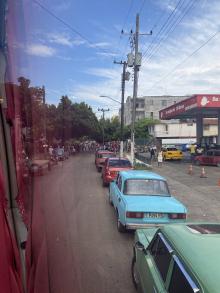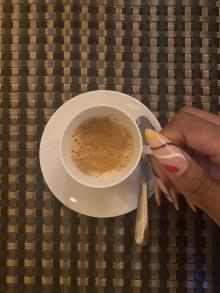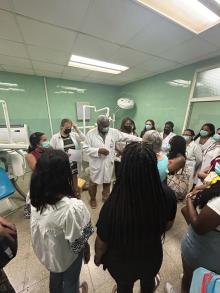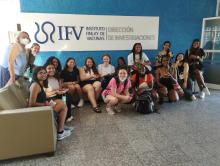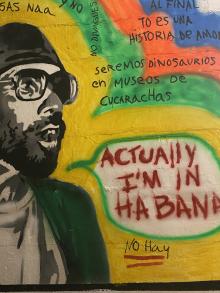Senam Attipoe ’23, MPH ’24, a graduate student with the Department of Health Policy and Management, recently traveled to Cuba as part of the Education Abroad “Law, Public Health and the Cuban Family” summer program.
Under the direction of Principal Lecturer Kerry Tripp, Attipoe and fellow students visited health clinics and hospitals, the pharmaceutical factory where Cuba invented its COVID-19 vaccine, a fertility clinic and a Cuban medical school. They also learned about Cuban culture, how socialized family law impacts Cuban families and the effects of economic isolation during the U.S. trade embargo.
Attipoe’s interest in Cuba began during her sophomore year, when she took a course comparing public health systems across the globe.
“I learned that some of their health outcomes are better than ours in the U.S., and that in Cuba there is no delineation between public health and healthcare, though it would be years before I thoroughly understood what this meant,” she said. “I have also always been interested in social justice … When I learned that the School of Public Health offered a study abroad course in Cuba, I felt passionately that I had to go.”
Below, Attipoe recalls highlights of her trip and how it has inspired her to share the country’s community-based approach to public health.
“The first day of the trip, I met the other students in person for the first time at the airport. We all got along really well and we became fast friends. When we first arrived in Cuba, we quickly visited our host families and met for orientation at a school where we would have lectures about the healthcare system and the legal system throughout the trip. We drove around Havana and saw the brightly colored cars from the 1950s, we pointed out cultural landmarks like the Hotel Nacional and we learned about some of the history.”
“In the mornings our host families made us breakfast and we talked about our plans for the day over Cuban coffee. We toured a medical school, attended a presentation at the Centro Nacional de Educación Sexual, and visited a dentistry clinic. It was at the dentistry clinic that I fully understood what it means to have no separation between public health and medical care. Before our tour of the facility, we received a lecture where we learned about the model of estomatología (known as stomatology or oral medicine in the U.S.) Four actions of health dictate their practice: promotion, prevention, healing and rehabilitation.”
“This dentistry clinic served 36,728 patients … The doctors regularly visit each member of the community to discuss their general health and to conduct the most basic screenings in order to determine whether an official visit to the clinic is recommended. If one is recommended, or if a patient feels they need to be seen, they make an appointment with a doctor. The dentistry also conducts research within the communities they serve in order to better determine target issues for promotion, prevention, and healing measures. I remember feeling excited and moved when I heard this; the holistic and community-based approach is starkly different from our approach to healthcare in the United States. Public health and healthcare truly do go hand-in-hand there.”
“We also visited a physical rehabilitation center, a center of traditional medicine, and a vaccine institute. We received tours and lectures and were met with the opportunity to ask questions everywhere we went. The trip was also quite cultural. We went to the beach, took a salsa class, visited the markets, toured art and history museums and took a snorkeling lesson. One of the best aspects of the trip was just talking to the people. I made friends with people I never would’ve had the chance to meet, and I got to hear perspectives and stories I’ll never forget.”
“As much fun as I had, I also observed and learned that the Cuban people are struggling, partly due to the nation’s relationship with the United States. One man said he felt Cubans are alone in the world. It was devastating to hear, and I’m sure it is even more devastating to live and to feel ... Despite the political relationship between Cuba and the U.S., the Cuban people deserve to be humanized, and they deserve for their stories to be heard … I spent a lot of time talking with the friends I made in the program, and we figured that sharing what we learned about the public health system there could be beneficial to us here. So while we figure out how to incorporate what we learned into our practices as public health practitioners, doctors, lawyers and revolutionaries, the best thing we can do now is start the right conversations.”
